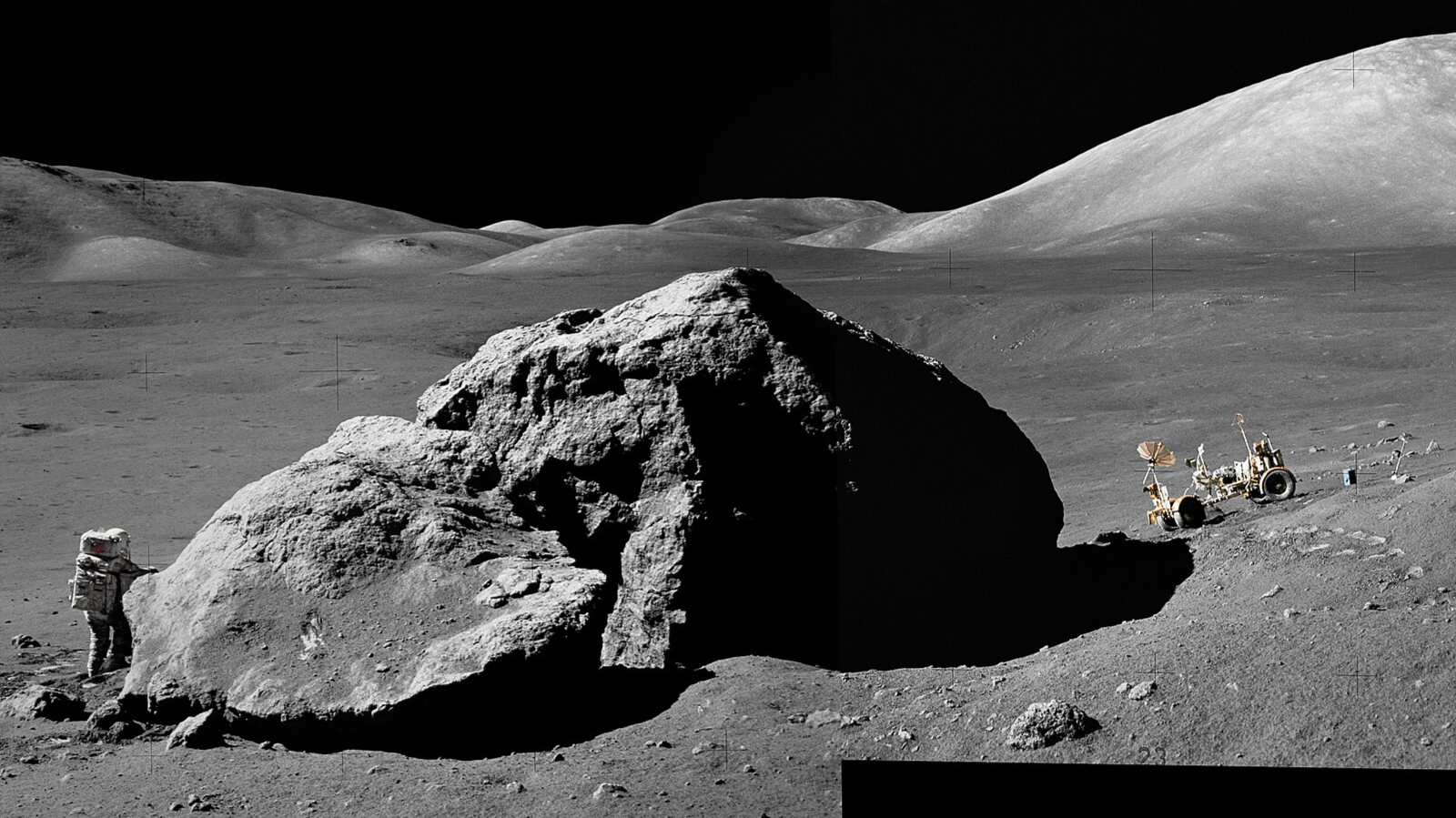Spectacular 'Supermoon' Wows Skywatchers Around the World
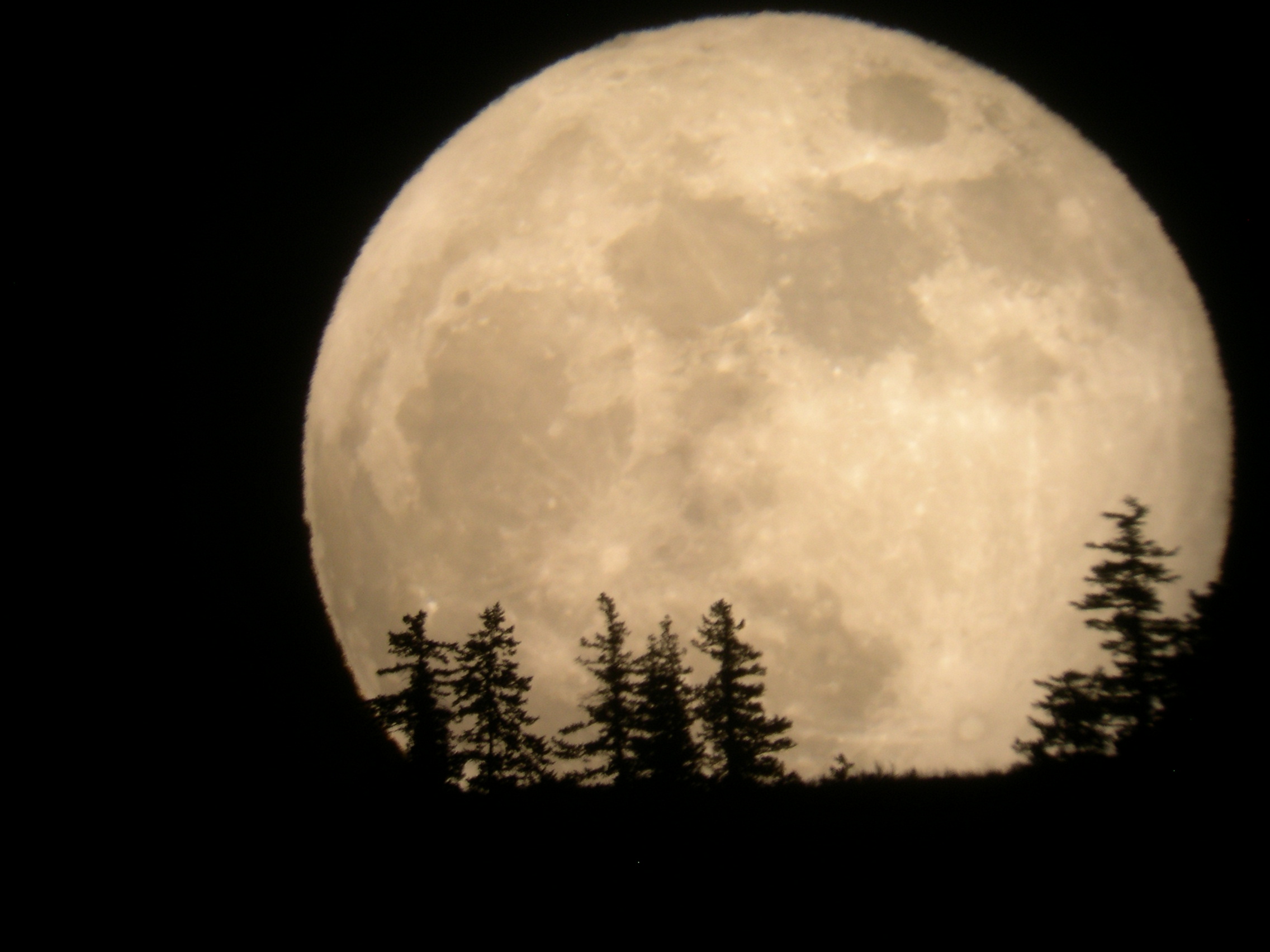
The biggest full moon of the year, a so-called "supermoon," rose into the night sky Saturday to the delight of skywatchers around the world, who captured the lunar sight in dazzling amateur astronomy photos.
Because of a fluke of orbital timing, the full moon of May peaked late Saturday just as the moon was passing its perigee, the closest point to Earth of its orbit. The result was the biggest full moon of the year, which NASA and other scientists nicknamed the supermoon of 2012.
In Amman, Jordan, the bright moon amazed skywatcher Carra Almond of Canton, N.C., who is currently living in Jordan with her husband. Almond said the moon was a captivating sight from her apartment balcony. Her photo shows a crystal clear moon shining bright against a black night sky. [Supermoon 2012 Photos from Around the World]
"I have taken several photos of the moon but have never taken one that turned out this good, and I had no idea the camera would zoom this far," Almond told SPACE.com in an email. "I was so amazed by the results when I loaded it up on the computer."
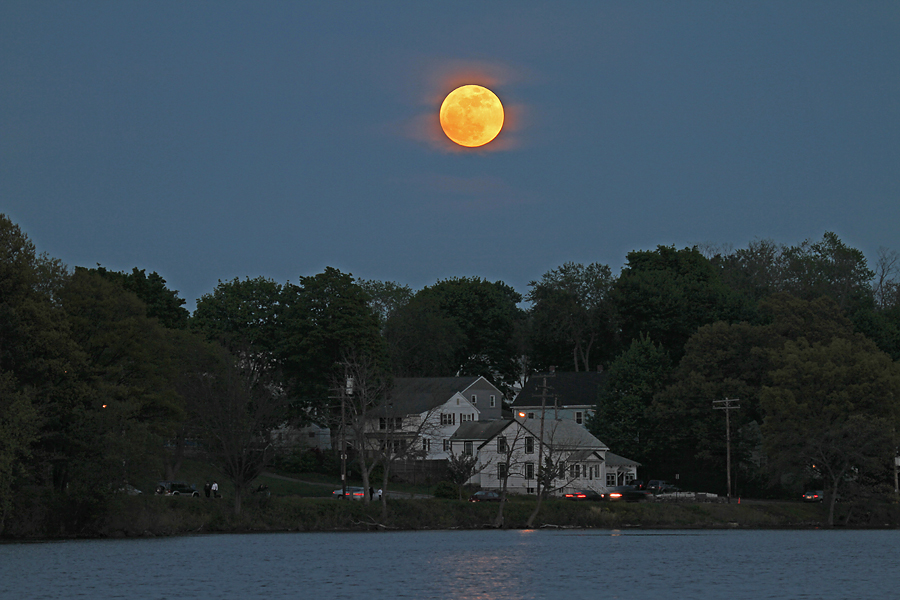
Biggest full moon of 2012
The supermoon hit its peak at 11:34 p.m. EDT (0334 GMT), when the moon reached its perigee and was about 221,802 miles (356,955 kilometers) from Earth at the time. One minute later, the full moon of May hit its peak, offering a dazzling lunar show for skywatchers with clear weather.
NASA officials predicted that the moon would appear up to 14 percent bigger than other full moons of 2012, and could shine 30 percent brighter because of the close pass. It was also expected to outshine much of the annual Eta Aquarid meteor shower, a "shooting star" display created each year when the Earth passes through a stream of dust from the famed Halley's comet.
Breaking space news, the latest updates on rocket launches, skywatching events and more!
The last time a supermoon occurred was on March 19, 2011, when the moon was about 248 miles (400 km) closer to Earth than it was on Saturday night. On average, the Earth-moon distance is about 230,000 miles (384,400 km). [Supermoon Full Moons Explained (Infographic)]
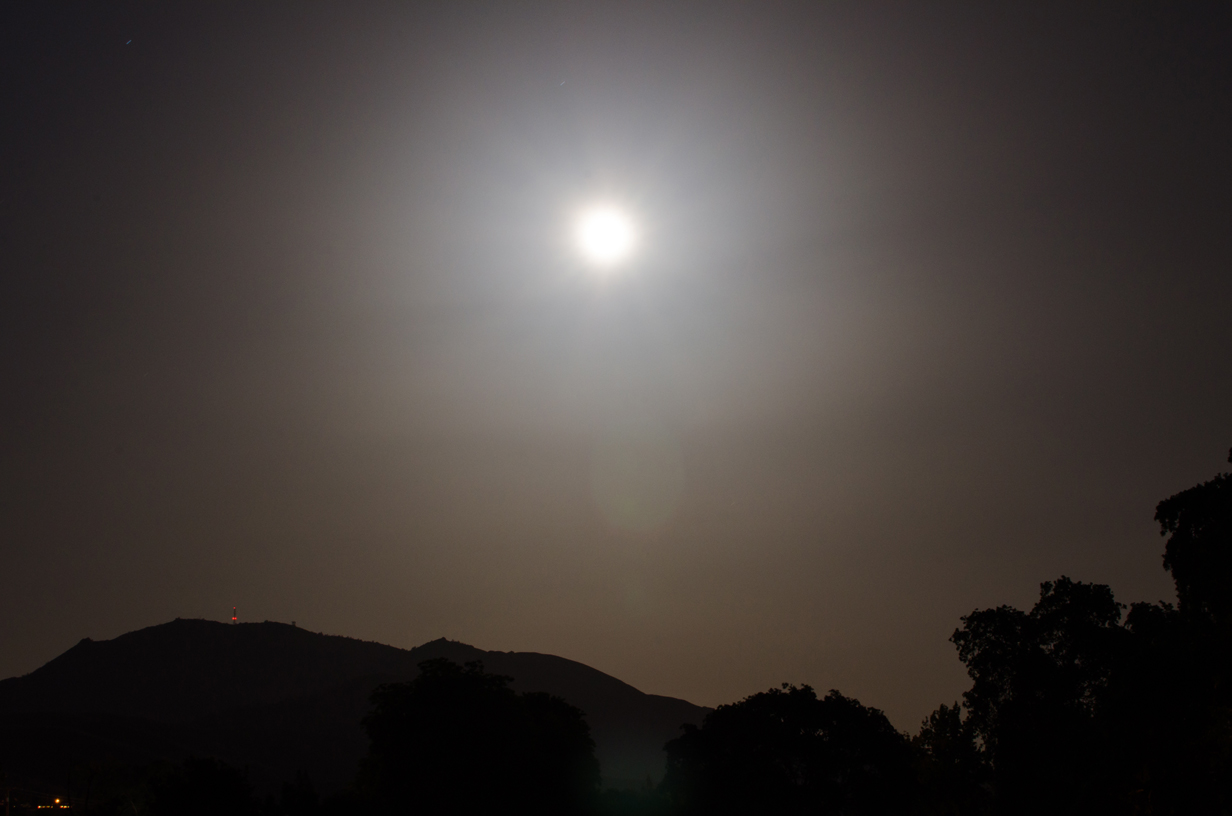
Skywatchers' lunar treat
Almond was not alone in her appreciation of Saturday's lunar sight.
Photographers and skywatchers from across the United States, Canada, Europe and Southeast Asia snapped a flood of photos of the supermoon and sent the results into SPACE.com. For many, it seemed like a chance to participate in a novel skywatching event, while others managed to capture stunning views of Earth's nearest neighbor.
Photographer Tim McCord of Entiat, Wash., snapped a jaw-dropping view of a huge full moon rising from behind a tree-lined hillside. The view is a combination of a telephoto lens and the so-called moon illusion, where the moon appears larger the lower it is on the horizon.
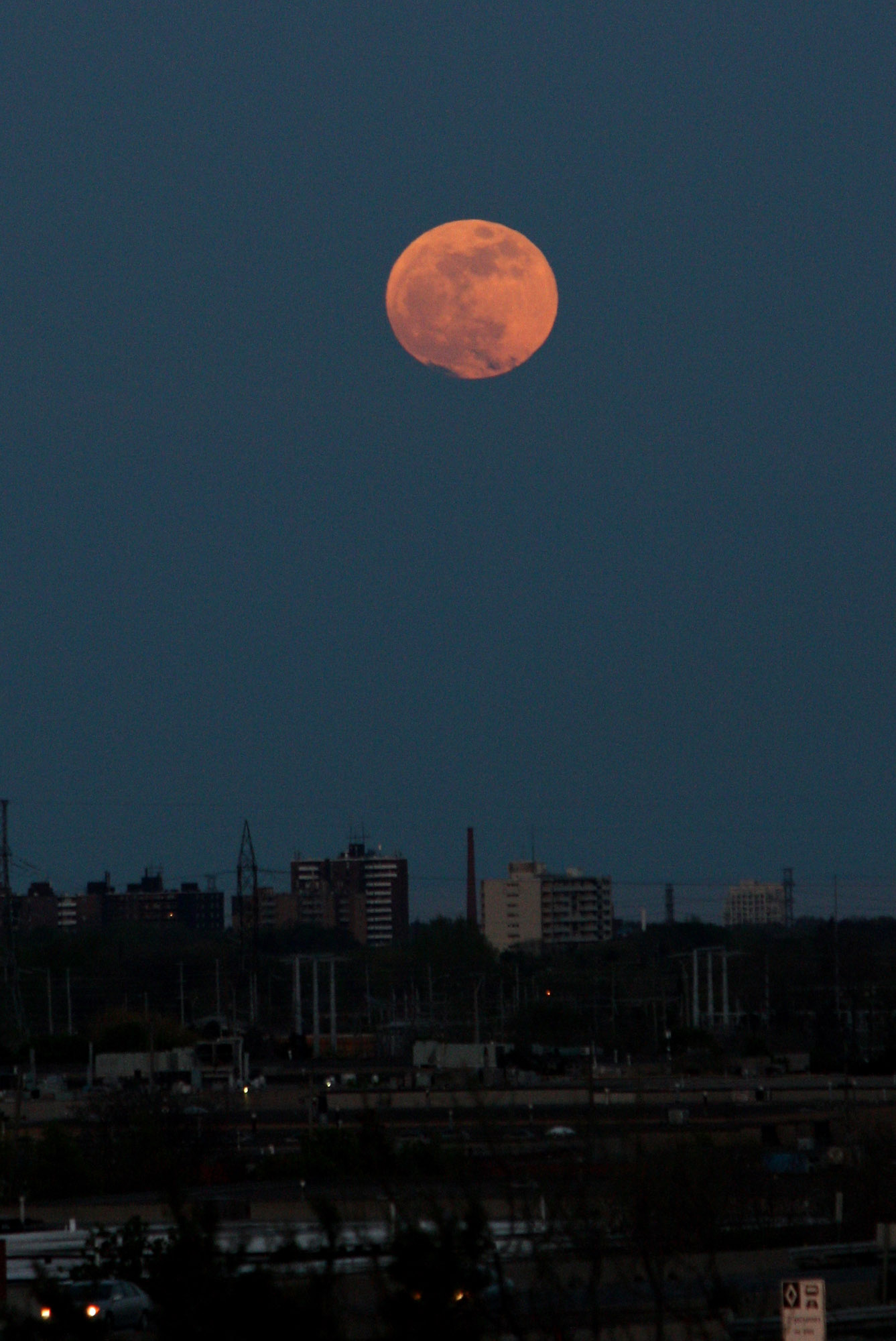
Another stunning sight came from photographer Reuben Opena, who captured a huge, reddish full moon hovering over parts of Toronto, Ontario in Canada.
May's extra big full moon was expected to create slightly higher tides on Earth, an effect called "perigean tides," but there was no chance of the supermoon posing a threat to Earth, scientists said.
In Woburn, Mass., veteran astrophotographers Imelda Joson and Edwin Aquirre caught the moon rising over Horn Pond despite cloudy conditions.
"The sky was overcast the whole day of Saturday, but it began to clear up by around 6 p.m.," Joson told SPACE.com. "There were still some low-lying clouds that lingered near the eastern horizon so we were not able to capture the actual moment of the full moon rising above the treetops."
Not everyone was lucky enough to have good weather during the supermoon of 2012.
In West Orange, N.J., dozens of skywatchers flocked to the area's Eagle Rock Reservation, which on clear days offers sweeping vistas of New York City and Newark, in hopes of enjoying the big full moon. But thick low clouds spoiled the view.
"More like a super-bust," one hopeful observer said.
While the supermoon may be over, the moon's skywatching displays in May are not. On May 20, the moon will pass in front of the sun as viewed from Earth in a solar eclipse.
Unlike total solar eclipses, when the moon completely covers the sun's disk, the moon will be too far from Earth on May 20 to completely block the sun. Instead, it will cover about 94 percent of the sun, leaving a bright ring around the outer edge known as an annulus. Astronomers call this type of solar eclipse an annular eclipse.
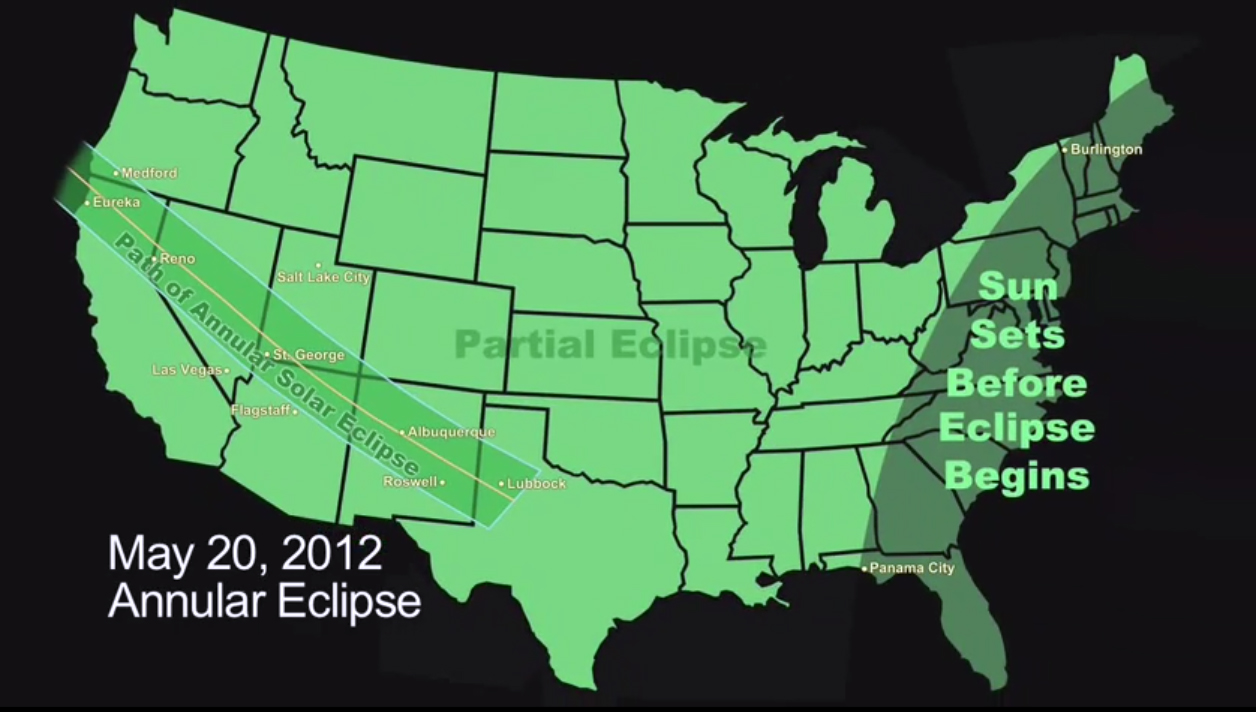
The best views of the May 20 annular solar eclipse will be along a 186-mile wide (300-km) track that stretches from East Asia, crosses the northern Pacific Ocean and ends in the western United States. A partial solar eclipse will be visible (weather permitting) to much of Asia, the Pacific region and about two-thirds of North America, NASA officials predict.
Warning: Never stare directly at the sun through binoculars or a telescope, or with the unaided eyes, during solar observing or solar eclipses. Severe eye damage can result. Only special solar filters should be used to ensure safe sun observing.
If you snapped an amazing photo of the supermoon of May or Eta Aquarid meteor shower, or capture a dazzling view of the May 20 solar eclipse (special solar filters required), and would like to share it with SPACE.com for a story or gallery, send photos and comments to managing editor Tariq Malik at: tmalik@space.com.
You can follow SPACE.com Managing Editor Tariq Malik on Twitter @tariqjmalik. Follow SPACE.com for the latest in space science and exploration news on Twitter @Spacedotcom and on Facebook.
Join our Space Forums to keep talking space on the latest missions, night sky and more! And if you have a news tip, correction or comment, let us know at: community@space.com.

Tariq is the Editor-in-Chief of Space.com and joined the team in 2001, first as an intern and staff writer, and later as an editor. He covers human spaceflight, exploration and space science, as well as skywatching and entertainment. He became Space.com's Managing Editor in 2009 and Editor-in-Chief in 2019. Before joining Space.com, Tariq was a staff reporter for The Los Angeles Times covering education and city beats in La Habra, Fullerton and Huntington Beach. In October 2022, Tariq received the Harry Kolcum Award for excellence in space reporting from the National Space Club Florida Committee. He is also an Eagle Scout (yes, he has the Space Exploration merit badge) and went to Space Camp four times as a kid and a fifth time as an adult. He has journalism degrees from the University of Southern California and New York University. You can find Tariq at Space.com and as the co-host to the This Week In Space podcast with space historian Rod Pyle on the TWiT network. To see his latest project, you can follow Tariq on Twitter @tariqjmalik.
